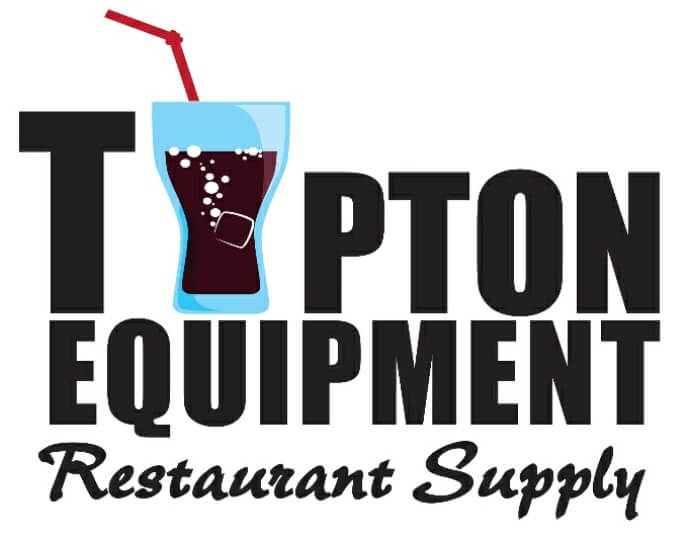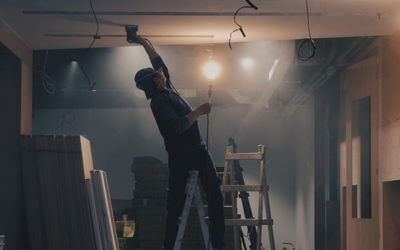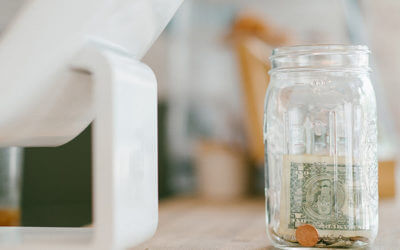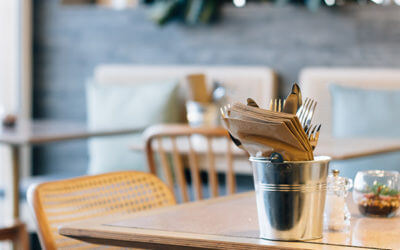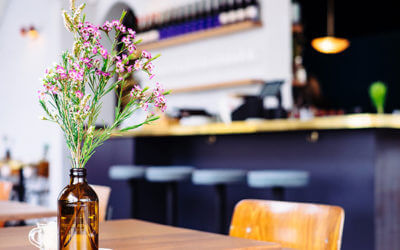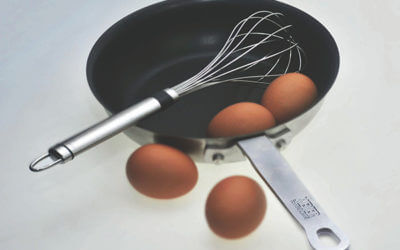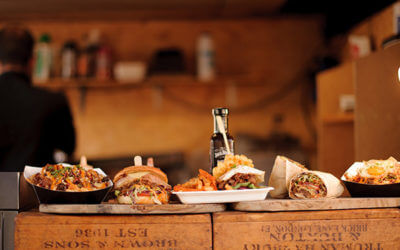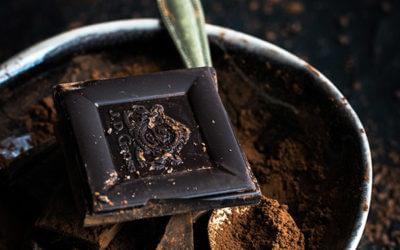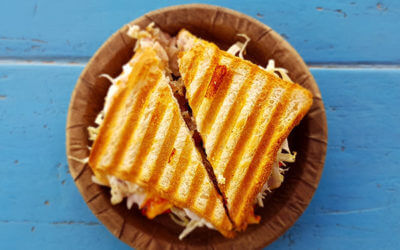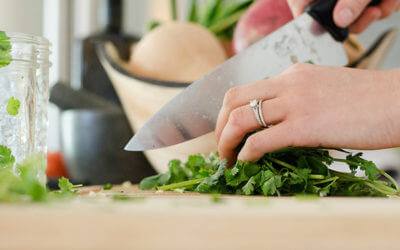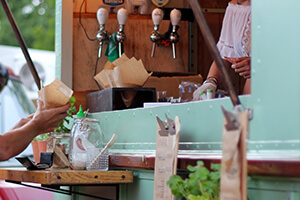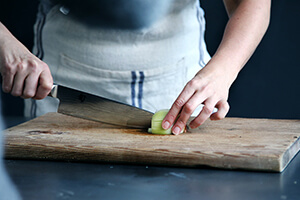Cooking Equipment Disasters You Can Avoid
August 29, 2019Cooking equipment disasters you can avoid through proper safety procedure and careful proceeding.
Kitchens are the heart of the home, but they’re also home to a lot of cooking equipment that can pose safety hazards. Cooking fires top the list of things that can go wrong in the kitchen followed by injuries from knives, cookware, food processors, microwaves, and blenders. Fires related to cooking peak over the holidays—Thanksgiving has three times the average cooking-related fires.
Keep an Eye on Your Cooking Equipment
Fires involving cooking equipment account for two of every five reported home fires. Unattended cooking equipment accounts for one in three fires, and half are ignited by fat, grease, oil, or related substances, according to the National Fire Protection Association. If you spend a lot of time in the kitchen, take a minute to bone up on these safety tips to avoid accidents.
Stay in the kitchen when you are frying, grilling, or broiling.
If you are simmering, baking or roasting, remain at home and check the food often. Set the timer as a reminder.
Keep anything that can catch fire—potholders, towels, food packaging—away from the stovetop.
Always keep a lid nearby to smother small grease fires by sliding the cover over the pan and turning off the burner.
If a fire starts in the oven, turn it off and leave the door closed.
If the fire gets out of hand, leave the house and call 911.
Keep a fire extinguisher with a minimum 5-B:C rating on hand.
Safety Tips for Dangerous Cooking Equipment
One of the great dangers in the kitchen are those blades of honed steel created to slice through produce and flesh: your kitchen knives. There are too many tips for listing here; there are whole classes dedicated to knife safety. But with some basics in mind and a review of more comprehensive knife safety guidelines, you can lessen your risk of injuring yourself or ditching a digit.
Always use sharp knives.
Do not hold food in your hand while you cut it.
Always cut on the cutting board. (Use a non-slip one or place a damp dishtowel beneath it to prevent it from slipping.)
Always keep fingers on top of the blade in case it moves.
Keep knife handles free of grease or other slippery substances.
Keep knives away from the edge of the counter to lessen the chance of being knocked off.
Never try to catch a falling knife!
Wash knives immediately after use. Do not leave knives in a sink of soapy water where they cannot be seen. Keep the sharp edge of the blade away from you when washing.
Whether it’s fire, knives or blenders, be mindful with your cooking equipment to spare yourself a trip to the emergency room.
Uh Oh. Handling Restaurant Disaster Recovery
No one wants to think about a major disaster hitting their restaurant. Unfortunately, it can happen at any time. In Arkansas, large areas (including Little Rock) were declared disaster areas as recently as last summer. Severe flooding, wind damage, and tornados are...
Restaurant Supplies You Need: Technology in Your Business
Every business is impacted by technology, and restaurants are no exception. There are dozens of ways to use technology to build your business, improve your efficiency, and serve customers better. Sometimes restaurant owners feel like they’re too busy to implement new...
Key Restaurant Equipment for a Fast-Casual Restaurant
Fast-casual dining has changed how America eats and has impacted what people expect in terms of convenience, price, and food quality. Generally, fast-casual food is affordable and higher-quality than pure fast food. It’s a step above a McDonald’s, without the price or...
Equipment for Your Restaurant: Choosing a Restaurant Concept
Some people who start a restaurant know exactly what they want. They either buy an existing restaurant with a concept, or they create the menu based on their family traditions or ethnic flair. However, not everyone who wants to start a restaurant knows exactly what...
Restaurant Supplies: Using Herbs to Add Flavor to Your Dishes
If you’re looking for new ways to attract people to your restaurant, consider the ways you can add flavor without adding fat or calories. Consumers are more and more concerned about the quality of what they eat, both at home and in a restaurant. Home cooks generally...
Commercial Kitchen Debate: Stainless Steel vs. Non-Stick Pans
If you run a commercial kitchen, you probably have a lot of ways of doing things that just seem right to you. For whatever reason, you decided between a gas and electric stove. You made decisions about dishware. And you probably have a position on the stainless steel...
Restaurant Equipment: How to Handle Gluten Allergies
In the last five years, you’ve probably seen a dramatic increase in the number of restaurant customers you have that are avoiding gluten. Some of them simply don’t like it, and others have a life-threatening reaction if they eat it. As a restaurant owner, you want to...
Reduce Food Waste: Proper Kitchen Equipment and More
Food waste is a reality in any commercial restaurant, but it doesn’t have to be accepted blindly. Too many restaurant owners or head chefs feel as though there is nothing they can do about this waste. Fortunately, there’s a lot you can do to reduce food waste in your...
Restaurant Supplies: Furnishing an Outdoor Sitting Area
Outdoor dining is a very enjoyable experience for many people. In Little Rock the weather is generally pleasant, although humidity may make it hard to eat outside on the hottest summer days. Adding an outdoor sitting area to your restaurant can be a great way to...
Commercial Kitchen Fun: The Wonder of Chocolate
If there’s anything that almost everyone loves as much as coffee, it’s chocolate. In fact, there are multiple celebrations of chocolate each year. Chocolate Day is on July 7th, because historically that’s when chocolate was first brought to Europe in 1550. Don’t miss...
Cooking Equipment Spotlight: Safe Indoor Grilling
Indoor grilling is a great way for your restaurant to delight customers without having to run a big charcoal operation out back. There’s nothing like grilled meat and vegetables to put a great aroma in the air and encourage hungry diners to dig in. There are two...
Restaurant Supplies: How to Properly Store Spirits & Drinks
Spirits and other alcoholic drinks can add a lot to your bottom line as a restaurant. These drinks often have high margins, and people order more than one frequently. This leads to more revenue for your restaurant and better tips for your servers! In order to make the...
Going Green Can Benefit Your Commercial Kitchen
Do you feel like running a restaurant means that you have to give in to wasted food, materials, and even money? Great news – you don’t. If you want to build your business, consider going green! You can structure your commercial kitchen to help the planet while also...
Key Foodservice Equipment for Your Food Truck
Are you ready to start a food truck? While the restaurant industry climbs slowly at roughly two percent a year, the food truck industry has been booming. Growing nearly 8% per year over the last five years, trucks are one of the fastest growing parts of the food...
Cooking Equipment Spotlight: The Right Knife for the Job
Not everyone who’s involved in a commercial kitchen has had professional training as a chef. As a result, not everyone is aware of how to choose the best cooking equipment for each job. Having the right knife is one of the most vital choices you can make during food...
